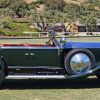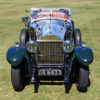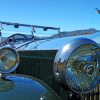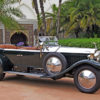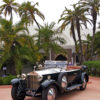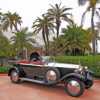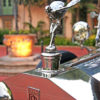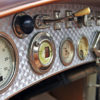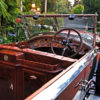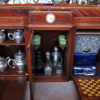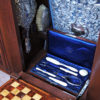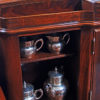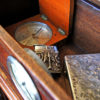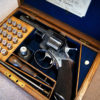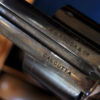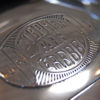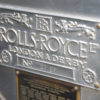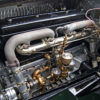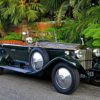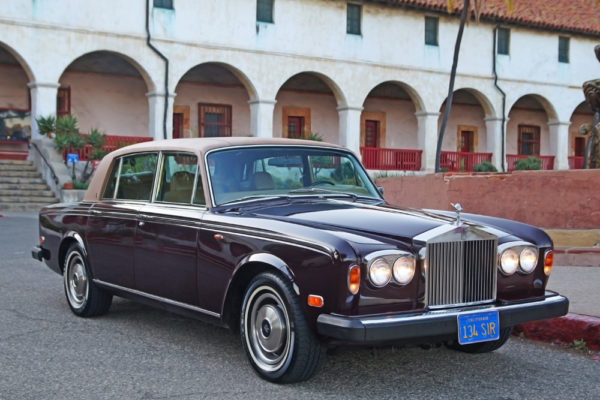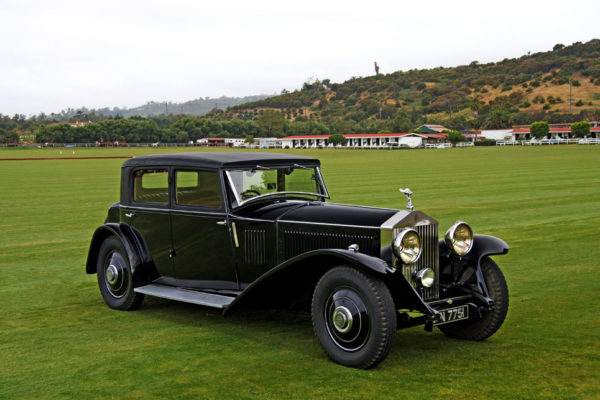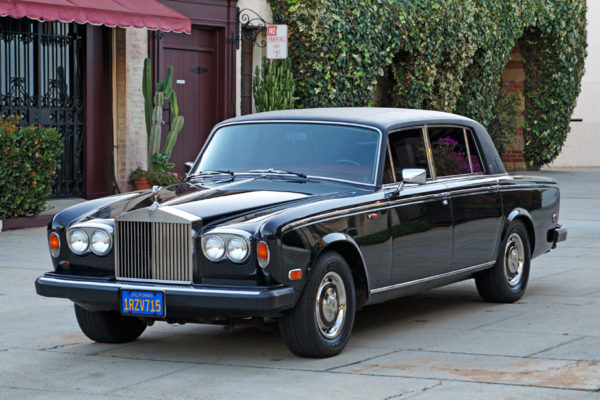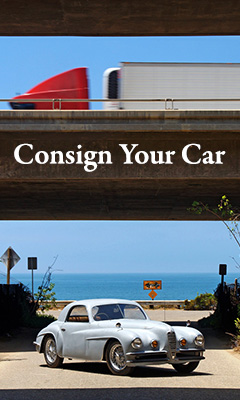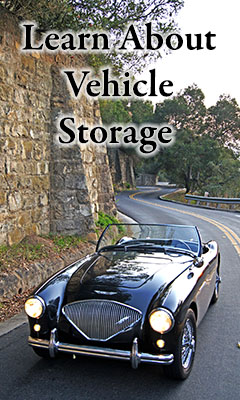Description
The H.H. Maharaja of Pithapurim 1927 Rolls-Royce Phantom I Tourer with Coachwork by Hooper & Co. Ltd
Of the many fashions throughout the history of the automobile, there is perhaps none more interesting than that of the Maharajas of the pre-war era. Early automobiles bound for India often carried the most luxurious and sporty equipment, but were additionally outfitted to withstand the more severe conditions of the desert. Furthermore, the pervasive presence of sand in the area often led to the finishing of cars in polished aluminum, at least in part. Although colonial ties played a role in the ordering of British-made motorcars, there was a distinct propensity amongst India’s royalty to command nothing other than Rolls-Royce.
Firmly placed at the top of the market from a quality perspective, Rolls-Royce seized the opportunity to take on the Indian market with their ultra-reliable chassis. Rolls-Royce saw fit to have a physical presence in Bombay, and began to take orders in conjunction with the era’s highest quality coachbuilders of the day.
One of Rolls-Royce’s royal clients was Sri Raja Rao Venkata Kumara Mahipati Suryarao Bahadur Garu, His Highness the Maharaja of Pithapuram. At the time of his rule, Pithapuram was a princely state that included a 1,000 square kilometer area located in Madras, the eastern region of Godavari. Born in 1885, the Maharaja fulfilled his role in a dynasty known for their philanthropic ways, which included organizing the Pithapuram Raja College. Although the life of a typical Maharaja was one of luxury, the prince also campaigned to improve the living conditions of the poor.
In early 1927, the H.H. Maharaja of Pithapuram placed an order with Rolls-Royce of Bombay Ltd. for a new Phantom I with Hooper & Co. coachwork. The order called for a new 40/50 HP Phantom I long-type chassis to be fitted with the new Hooper open touring body number 6752. Chassis 57-EF, already intended as “Indian Stock” for Rolls Royce of Bombay, completed testing and was sent to Hooper on April 12, 1927.
The Tourer was built with an ash frame and paneling entirely of aluminum. The domed wings and running boards were similarly constructed of aluminum. The windshield was specified as a sloping type, divided vertically and horizontally with opening capability. For better air circulation, two horn-shaped vents were installed on the scuttle in addition to the standard-type scuttle vent. The instrument panel was ordered in aluminum, and the instruments themselves were given nickel silver faces with black characters. The steering wheel was finished in ivory to match the ivory switches and handles specified throughout. The chassis was fitted with a louvred bonnet with bonnet locks and a nickel radiator with polished nickel shutters. Remaining hardware was finished in nickel to match, including a luggage rack.
The leather interior was equipped with front and rear folding armrests and wooden cases in the rear were outfitted with bottles, a card case, a mirror and a clock. A case in the front compartment between the seats was included to hold a revolver, a necessary accessory at the time. Automatic running board lights were included, illuminating when the doors were opened, and a Barker Dipping system was mounted to Stephen Grebel headlamps, with a scuttle-mounted Grebel spotlight to match.
The handsome new Rolls-Royce was completed in August and loaded aboard the S.S. Ranpura bound for Bombay in September, insured for a value of £2,850. As with the majority of motorcars delivered to India, little is known of the car’s existence there. In 1964, the Maharaja passed away and the Rolls-Royce eventually made its way to America.
The Phantom I was found by Charles Howard in 1989. A well-known dealer with a taste for Rolls-Royce motorcars, Mr. Howard was responsible for the unearthing of many such Maharaja automobiles in India. The Rolls-Royce returned to England where it was restored and subsequently displayed at the 1993 Pebble Beach World Classic Auto Exposition. The car eventually passed to Thomas Barrett III of Scottsdale, Arizona, before being sold and returning to England. This past year, the Phantom I was purchased by a noted Rolls-Royce connoisseur in California.
Over the past several months, 57-EF has undergone an extensive restoration of the coachwork in addition to a servicing of the chassis and major mechanical components. Fantastically finished in Phthalo Green paint with a polished aluminum upper bonnet, scuttle and door tops, the Phantom I was further accented by proper polished aluminum wheel discs. The exterior hardware was found to be complete, including the intricately sloped windscreen, the Barker Dipping system with Stephen Grebel headlamps and the matching Grebel spotlight on its proper mount. The nickel plating was renewed where necessary.
The interior retains its special-order instrument panel, nickel-faced instruments, ivory handles and knobs, and even its rear compartment clock. The interior was additionally trimmed in a wonderfully rich Nutmeg hide, which matches the flame mahogany woodwork beautifully. The rear cabinetry with ivory inlay has been outfitted with period correct items including a four-piece silver tea set, a set of four jade traveling cups, two glass and sterling silver etched bottles, a glass and sterling silver flask, a set of leather-wrapped Champiere of Paris binoculars, a sterling silver and blue velvet ledger, an ivory grooming kit with leather case, a sterling silver vanity mirror with a matching bristle brush set, an inlaid wooden chessboard with hand-carved wooden chessmen, a brass compass, a sterling silver card case and a sterling silver Indian cigarette lighter.
Tastefully finished, 57-EF is as striking today as it was upon delivery, an unmistakable symbol of wealth in pre-war India. This handsome Hooper Tourer is a marvelous example of the connection between Maharajas and Rolls-Royce and is well documented with copies of both Rolls-Royce and Hooper & Co. records. Per original specification, a case between the front seats holds the revolver – a Webley .455 Royal Irish Constabulary that was sold new by R.B. Rodda and Company of Dalhousie Square, Calcutta, India. The revolver itself has been decommissioned and the consignor is happy to make the item available to any interested buyer. The heavily appointed Phantom I has benefitted from significant recent attention and remains unseen on the concours showfield where it is no doubt worthy of display. The Rolls-Royces delivered to India remain among the rarest and finest examples of the marque, and 57-EF is unquestionably a significant inclusion.



